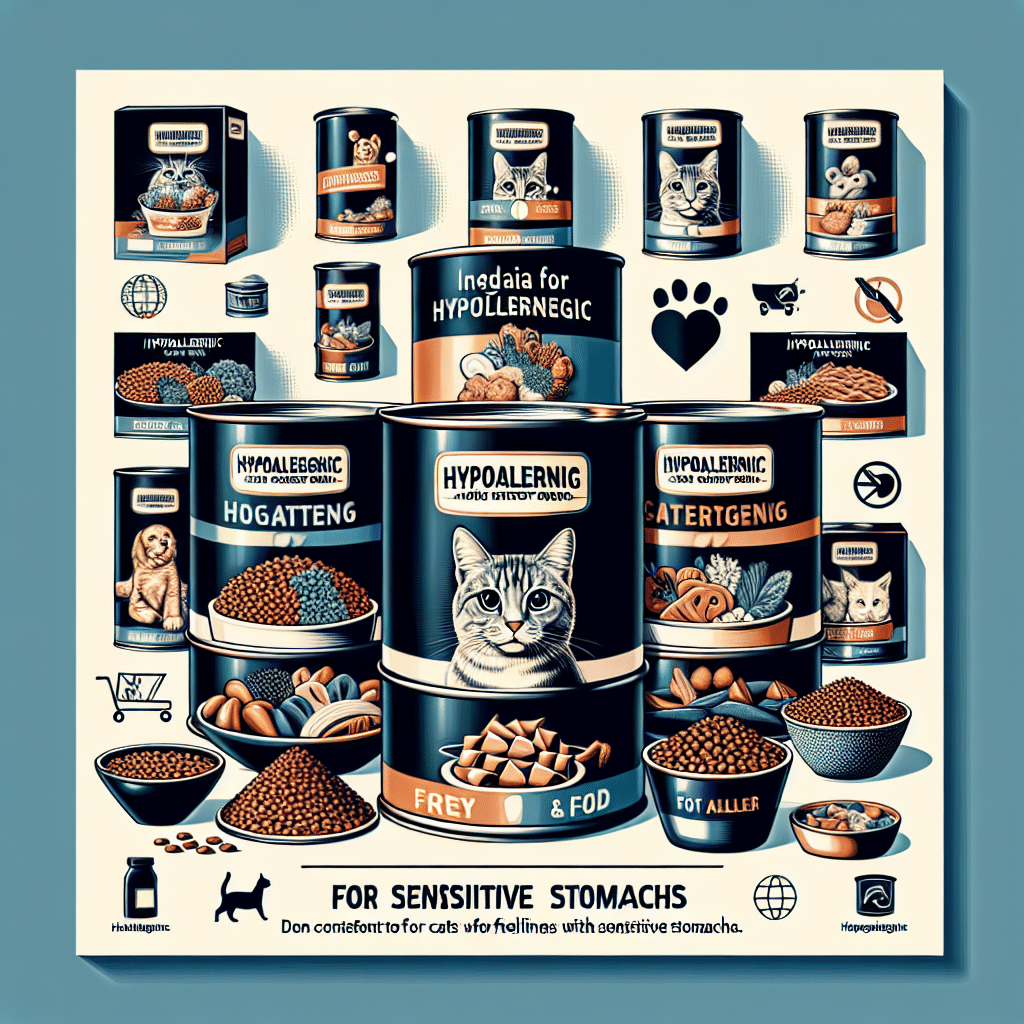Understanding Hypoallergenic Cat Food for Sensitive Stomachs
Hypoallergenic cat food has emerged as a go-to solution for pet owners whose feline companions suffer from food sensitivities and digestive issues. These specially formulated diets prioritize ingredients that minimize allergic reactions while providing essential nutrients for overall health. In this comprehensive guide, we will explore the various aspects of hypoallergenic cat food tailored for sensitive stomachs.
What is Hypoallergenic Cat Food?
Hypoallergenic cat food is crafted to reduce the likelihood of allergic reactions and digestive disturbances in cats. This type of food typically utilizes novel proteins and carbohydrates, which are less likely to evoke an immune response. Ingredients such as duck, venison, or fish are common alternatives to more conventional sources like chicken or beef, which are frequent allergens. They often contain minimal ingredients to limit exposure to potential allergens.
Common Symptoms of Food Sensitivities in Cats
Recognizing the signs of food sensitivities in cats is crucial for pet owners. Common symptoms include:
- Vomiting: Frequent vomiting can indicate that your cat’s stomach is struggling to process certain ingredients.
- Diarrhea: Loose stools or increased bowel movements often accompany food sensitivities.
- Lethargy: A lack of energy or interest in activities may signal discomfort from an upset stomach.
- Itchy Skin: Allergies can manifest through skin irritations, leading to excessive grooming and potential fur loss.
- Weight Loss: Unintended weight loss may occur if a cat is unable to absorb nutrients properly due to digestive issues.
Key Ingredients to Look for in Hypoallergenic Cat Food
When selecting hypoallergenic cat food for a sensitive stomach, it’s essential to consider certain ingredients that aid in digestive health:
-
Novel Proteins: As mentioned earlier, proteins like rabbit, duck, or kangaroo are often less likely to trigger allergies. It’s advisable to choose food that features a single protein source.
-
Limited Ingredients: Foods that incorporate fewer ingredients help minimize the potential for allergies. Look for products marked as “limited ingredient diets” (LIDs).
-
Hydrolyzed Proteins: Hydrolyzed protein is broken down into smaller components, making it less recognizable to a cat’s immune system, which can reduce allergic responses.
-
Grain-Free Formulas: Many cats struggle with grains. Grain-free options that use alternative carbohydrates such as sweet potatoes or peas can be beneficial.
-
Digestive Aids: Probiotics and prebiotics are essential for promoting gut health in cats. These ingredients help maintain a healthy balance of bacteria in the digestive system.
-
Omega Fatty Acids: Ingredients rich in Omega-3 and Omega-6 fatty acids can improve skin health and coat condition and reduce inflammation.
Popular Brands Offering Hypoallergenic Cat Food
Several reputable brands offer hypoallergenic cat food formulated for sensitive stomachs. Here are a few:
-
Hill’s Prescription Diet: Known for its VET prescribed lines, Hill’s offers specific formulations, such as z/d, featuring hydrolyzed protein that is easily digestible.
-
Royal Canin Veterinary Diet: Their recipes include unique proteins and are tailored for specific dietary needs, providing a comprehensive hypoallergenic option.
-
Blue Buffalo Basics: This brand offers a limited ingredient diet focusing on a single animal protein source, which is ideal for cats with food sensitivities.
-
Natural Balance L.I.D: Featuring limited ingredients, the Natural Balance line is well-regarded for its digestibility and allergen-free options.
Transitioning to Hypoallergenic Cat Food
Transitioning your cat to hypoallergenic cat food requires careful consideration to avoid exacerbating digestive issues:
-
Slow Introduction: Gradually mix the hypoallergenic food with your cat’s current diet. Start with a 25% to 75% ratio of new to old food, gradually increasing the new food over a week.
-
Monitor Reactions: Keep a close eye on your cat’s symptoms during the transition period to gauge their tolerance to the new food.
-
Consult Your Veterinarian: Always discuss dietary changes with your vet. They can provide insights into which food is best suited to your cat’s specific needs and health conditions.
Nutritional Considerations
While finding hypoallergenic food for sensitive stomachs is vital, ensuring the diet remains nutritionally balanced is equally important. A high-quality hypoallergenic cat food should include:
- Sufficient Protein Levels: Essential for maintaining muscle mass and overall health.
- Adequate Fat Content: Fat is a crucial energy source; it should come from quality sources to ensure overall well-being.
- Vitamins and Minerals: Nutritional adequacy is essential; ensure the diet meets the AAFCO guidelines for completeness.
The Role of Regular Vet Check-ups
Routine veterinary check-ups are instrumental in managing your cat’s food sensitivities. Blood tests or elimination diets may be necessary to identify specific allergens and confirm the diagnosis of food sensitivities. Keeping an ongoing dialogue with your veterinarian ensures your cat receives the best care and appropriate food choices, thus maintaining their health over the long term.
Conclusion
Choosing the right hypoallergenic cat food for your cat with a sensitive stomach involves understanding the ingredients, identifying potential allergens, and consulting with a veterinarian. By being proactive and informed, you can enhance your furry friend’s quality of life and ensure they thrive on a diet tailored to their unique digestive needs.
